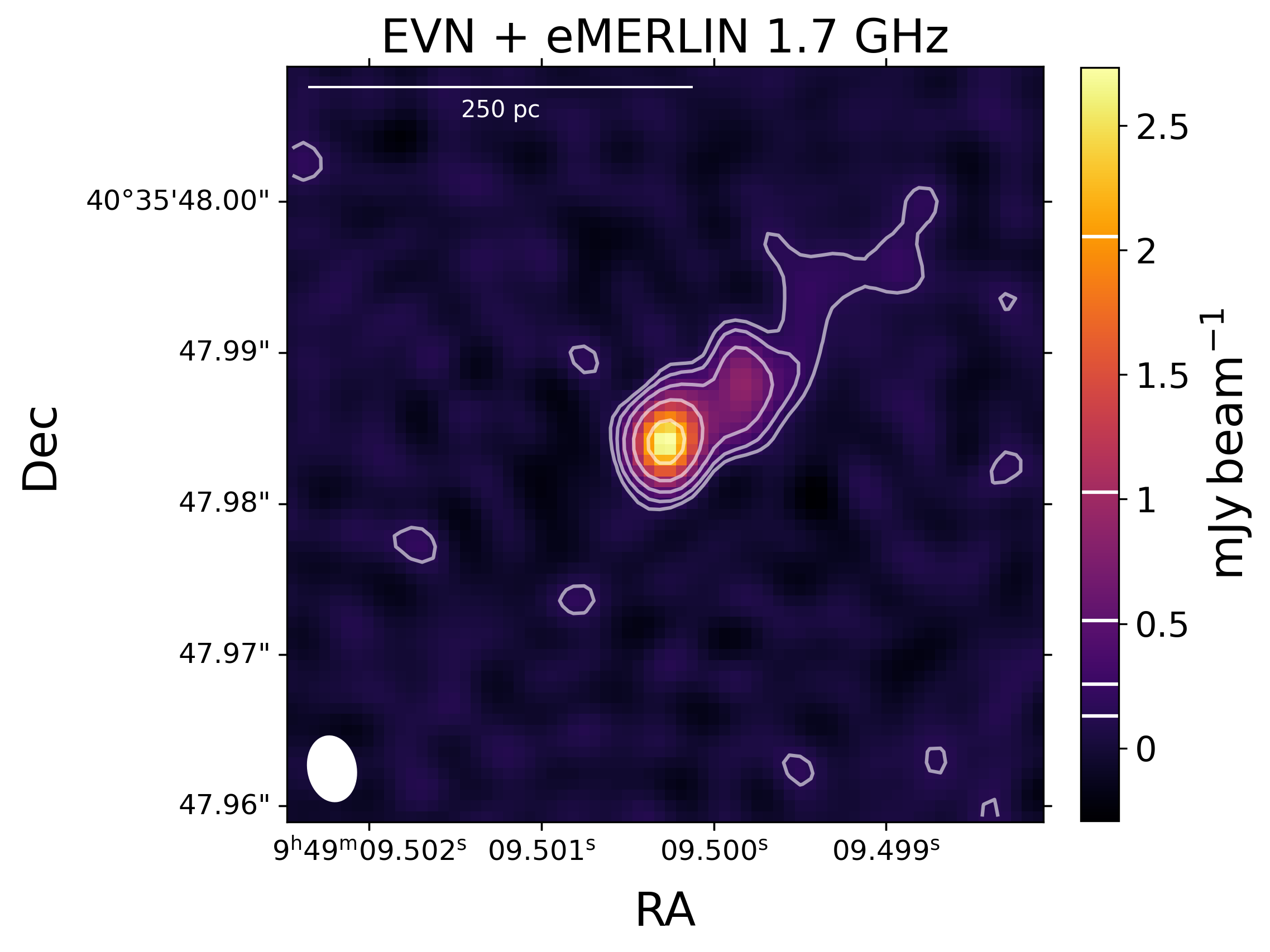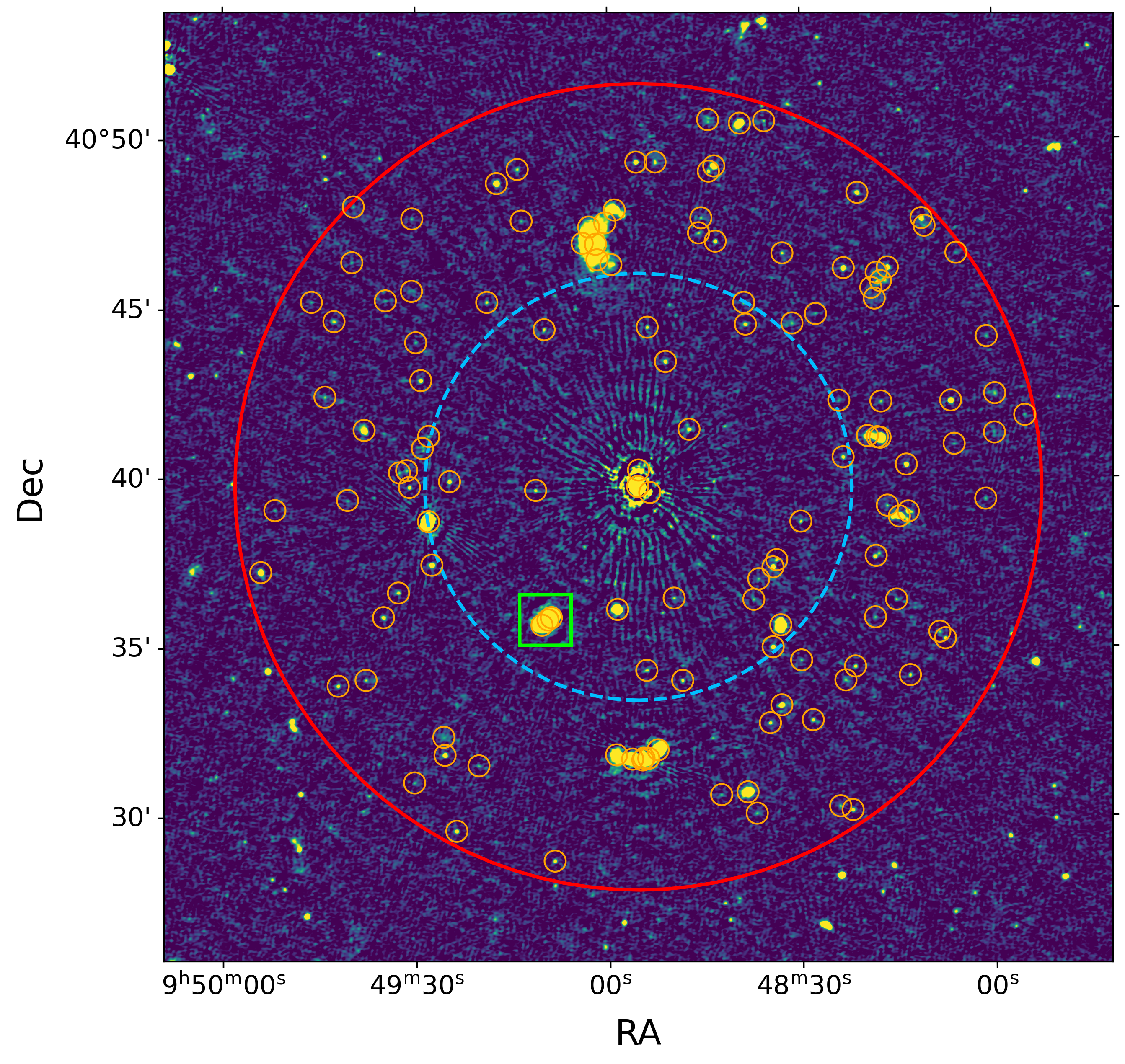
SWEEPS: the beginnings of commensal surveys with the eMERLIN-EVN
Célestin Herbé-George
This project leverages recent technical advances, such as multiple phase centre correlation and multi-source self-calibration, to bring VLBI into the realm of large statistical studies with ~8000 sources observed per year (Herbé-George et al. in prep.). These will be essential in advancing the key topics studied with VLBI such as, the role of AGN feedback (e.g. Zhuang et al. 2021, King & Pounds 2015), detecting binary black holes to study the hierarchical galaxy formation models (e.g. Rodriguez et al. 2006) and testing different dark matter models with gravitational lenses (e.g. Spingola et al. 2018; Powell et al. 2023).
Here, we demonstrate a proof-of-concept of this methodology by detecting a 5.6 mJy core-jet object at 1.7 GHz shown in Figure 1. This object, which was present in the raw visibilities of the observation, would have otherwise been lost from the parent data set and is the first object to be recovered as part of the SWEEPS pilot programme. The other objects present within the primary beams of the EVN+eMERLIN telescopes are shown in figure 2 and illustrate the potential for increasing sample sizes of VLBI-detected radio sources with commensal observing modes in the near future.

Figure 1. Briggs weighted (Robust = 0) 1.7 GHz EVN and e-MERLIN image of SWEEPS J094909+403548, with a restoring beam of 4.3 mas × 3.1 mas at a position angle of 10.7 deg east of north. The peak surface brightness is 2.73 mJy beam-1 and the off-source rms is 64.9 𝜇Jy beam-1. The contour levels are at (2, 4, 8, 16, 32) × 𝜎rms, where 𝜎rms is the rms map noise.

Figure 2. 144 MHz LoTSS DR2 image of the J0948+4039 phase calibrator field. The orange circles of radius 18.8 arcsec show each phase centre and represent the average 10 per cent time and bandwidth smearing radius. The circles in dashed-blue (6.3 arcmin in radius) and in solid-red (11.9 arcmin in radius) correspond to the half-power beam widths of a 100 and 32 m telescope, respectively. The green box corresponds to SWEEPS J094909+403548, our first target from the project, which includes three phase centres across the LoTSS detection.
References:
King A., Pounds K., 2015, ARA&A, 53, 115
Powell D. M., Vegetti S., McKean J. P., White S. D. M., Ferreira E. G. M.,
May S., Spingola C., 2023, MNRAS, 524, L84
Rodriguez C., Taylor G. B., Zavala R. T., Peck A. B., Pollack L. K., Romani
R. W., 2006, ApJ, 646, 49
Shimwell T. W., et al., 2022, A&A, 659, A1
Spingola C., McKean J. P., Auger M. W., Fassnacht C. D., Koopmans L. V. E.,
Lagattuta D. J., Vegetti S., 2018, MNRAS, 478, 4816
Zhuang M.-Y., Ho L. C., Shangguan J., 2021, ApJ, 906, 38
Link to the paper:
Contact:
Célestin Herbé-George, Kapteyn Astronomical Institute, University of Groningen, NL. Email:herbegeorge@astro.rug.nl